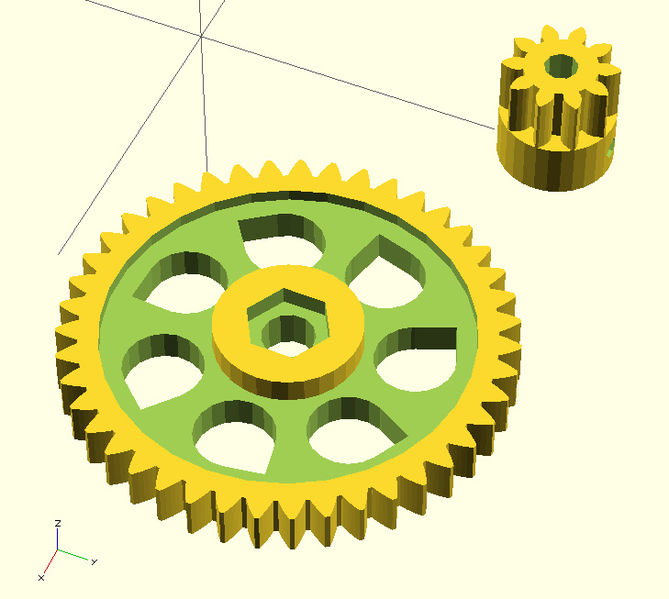

Hull() takes any number of objects and builds their convex hull the action is like wrapping cling film tightly around the shapes and solidifying the result. If you’ve never really understood hull() before, this is a great place to start. I’ve even seen people make rounding tools and difference them out of the model.įor me, the most intuitive method is to place the four cylinders that would be the box’s round edges, and connect them all together with hull().

Another method, that renders a lot faster, is to draw a 2D square, offset() it with rounded edges, and extrude this upwards. One is to draw a 3D box and minkowski() around it with an appropriate cylinder.

There are multiple ways to make a rounded box. If you use OpenSCAD and your creations end up with hard edges, or you spend too much time figuring out angles, or if you just want to experience another way to get the job done, read on! And with a little ingenuity, hull() can provide a nearly complete modelling strategy all on its own. I think this documentation should be placed in involutegears.scad itself. Note that pi radians 180 degrees, and that OpenSCAD uses degrees, instead of radians, in its trigonometric functions.
OPENSCAD GEAR LIBRARY CODE
Hull() solves a number of newbie problems: making things round and connecting things together. But for murky historical reasons, the gear () code defines circularpitch 180 / diametralpitch. Hull() does just what it says on the can - creates a convex hull around the objects that are passed to it as children - but that turns out to be invaluable. Download: openscad-signing-key_0x8AF822A975097442.What’s your favorite OpenSCAD command? Perhaps it’s intersection() or difference()? Or are you a polygon() and extrude() modeler? For me, the most useful, and maybe most often overlooked, function is hull().Prior releases are available at Signature
OPENSCAD GEAR LIBRARY INSTALL
To install OpenSCAD from git on Arch Linux the openSUSE packages built on OpenSUSE build service openSUSE Leap 15.3 (64-bit only) openSUSE Leap 15.4 (64-bit only) openSUSE Tumbleweed Fedora packages built on OpenSUSE build service Fedora 33 (x86_64, armv7l, aarch64, ppc64le) Fedora 34 (x86_64, armv7l, aarch64, ppc64le) Fedora 35 (x86_64, armv7l, aarch64, ppc64le) Fedora Rawhide (x86_64, i586) Arch Linux OBS also supports HTTP links, but it's recommended to use In Debian/Ubuntu this is usually handled by theĪpt-transport-https package. The repository links below are shown as https, please check for your installation if This can be done by creating a newįile /etc/apt//openscad.list with the URL specific to the distribution. # wget -qO- | sudo tee /etc/apt//obs-openscad-nightly.ascĪfter the key is added, the repository URL needs to be configured.
OPENSCAD GEAR LIBRARY DOWNLOAD
In this case the following command will download and store the key. In newer Debian the storage for the key is changed, more information can be found in the apt-key(8) NOTE: If you get errors about an expired key valid till, please re-import via the following command. To install the packages, the release key must be added with apt-key to the key-ring to allowĪpt-get / aptitude to validate the packages. Debian / Ubuntu packages built on OpenSUSE build service Install the development snapshot packages in parallel to the release versionįrom the official repositories. Note: The packages are called " openscad-nightly" so it's possible to The packages are automatically built based on the


 0 kommentar(er)
0 kommentar(er)
